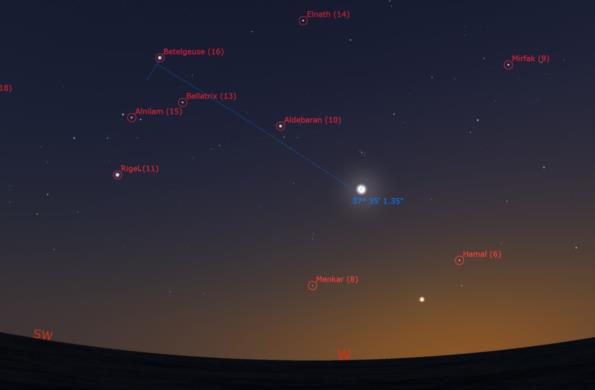
NavList:
A Community Devoted to the Preservation and Practice of Celestial Navigation and Other Methods of Traditional Wayfinding
From: Frank Reed
Date: 2023 Apr 6, 09:58 -0700
Art Leung, you wrote:
"My computed GMT time for this second series and was off by 15 clock minutes. But, I went to your web app and put my data into it and it says I was off by 0.06' so I suspect that I messed up on the paper reduction."
Well, yes. That follows. :) The paper reduction is irrelevant for now. Trust the app(s). An error of 0.06' is basically as good as it gets. You may count that as your first perfect lunar (we have hats). I used to get lunars with a typical standard deviation (scatter) of about 0.25' and averaging four about twice as good. I don't have a sextant with a scope power better than 3.5x presently, plus I care less now, and so my typical results have a standard deviation around 0.4' and about 0.2' averaging four.
I have a fairly good guess what went to badly wrong your first lunar series producing that big mean error of 5' or more and significant noise on top of that. I doubt it was a sudden jump in index error. That rarely happens in quality metal sextants. If it did happen regularly, sextant observations of all sorts would be nearly useless for navigation. Instead, I suspect that you discovered one of the issues with short distance lunars. You were presumably bringing the star into contact with the Moon's limb at a location that was well away from the prime spot, directly facing Regulus, for that lunar observation. With lunars at longer ranges, this is relatively easy to detect. You sweep the star by the Moon, and it will just brush or "scrape" the Moon's limb as it goes by. Sweep and scrape (Hmmm... I think I need that on a hat, too!).
You asked:
"Do you have Thompson's tables on your web site, as well? "
No, I reserve the quality versions of those for my workshops. I'll be teaching my Lunars workshop at the Treworgy Planetarium at Mystic Seaport Museum in early June. If you can't make it to Connecticut, I also anticipate an online session. Or you can buy a copy of the tables and guidebook for the workshop for $100. Is it worth a hundred bucks? No! I mean, yes, of course it is. You'll have to decide. It's only a dozen pages, but it's the finest distilled white lightning of lunarian liquor anywhere this side of Tranquility Base. The tables and methodology are protected by copyright, of course.
Prefer a deep dive into history? You can get the original Thompson Tables for free from 19th century sources. Difficult to puzzle out but fun if you like that sort of thing. Here's an 1845 edition of Thomson's Lunar and Horary Tables.
Also, I would point you to an essay I wrote years ago with some practical advice and also details on a simple method for clearing lunars which is relatively close to Thomson's Method. Go to ReedNavigation.com/lunars and look for Easy Lunars.
You added:
"I will definitely use your predicted distance app in the future!"
Yeah, this was how they did it back in the day. You're never lost (that's an axiom of navigation), so you know your approximate GMT within a few dozen minutes on a bad day, maybe wrong by an hour if you lost your watch in a three-day typhoon or some such disaster. And since the Moon moves half a degree in an hour against the background stars, knowing your time to the hour is enough to look up the Moon's distance from any star accurately enough to find it instantly in a sextant. From there, it's just a little adjustment.
By the way, you should experiment with other methods of estimating angles among stars and lunars angles, too. One way to get a good approximate angle is to the use the angle-measuring tool in Stellarium. You drag the tool from one star to another and read off the result. Example attached. It's useful for planning.
Frank Reed
Clockwork Mapping / ReedNavigation.com
Conanicut Island USA
PS: No, there aren't really any hats. ;-)







